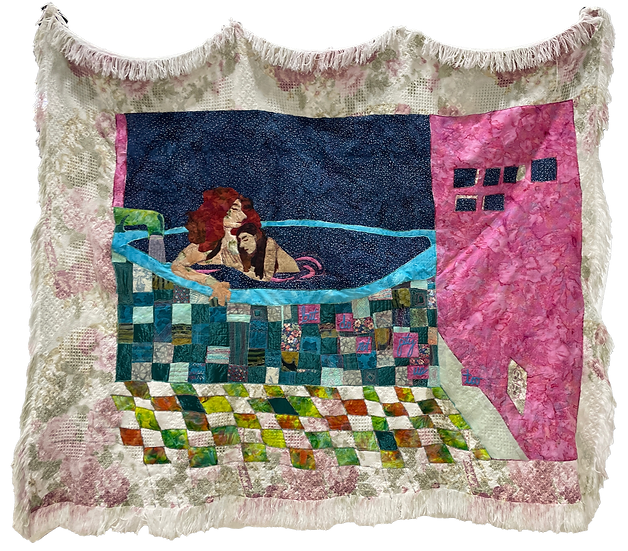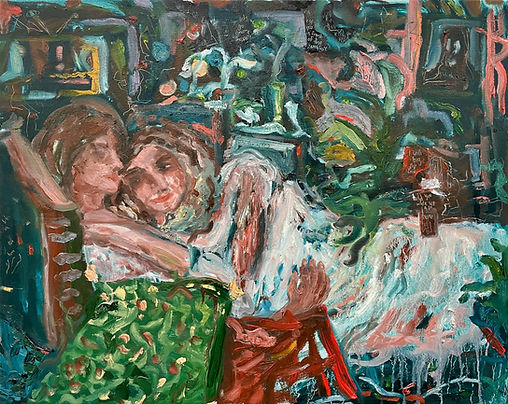top of page

TINA ROSE REA MEISTER
interdisciplinary artist
experimental film | painting | social practice | textile & craft
My studio research blends multimedia artwork, social practice, and archives to trace queer relational dynamics, kinship, and world-making through the lens of domestic and ecological spaces.
SOCIAL PRACTICE

Soft Places: Preserving the Sapphic and Lesbian Home Archive

The Sum of Our Parts: Experimental Film Portraits
My current artistic social practice is centered around recording the queer home archive, a piece often missing from a history that documents a public struggle for acceptance and human rights. My work seeks to respond to a question that has been ever under the surface in queer representation:
How do we capture, represent, and uplift experiences of the vulnerable self, while contending with a system that expects surveillance, over-exposure, and access to our most private interiors?
My studio investigations use fabric, quilting and mending as motifs for queer kinship, fragmentation of identity, and community. Using the medium of textiles and film, I investigate how we might uplift the fragmented self while drawing associations to the relational attachments of one’s personal and more broad community and sense of place. These practices center queer identity as communal, political, ecological, personal.
TEXTILES

In addition to the textile components of my social practice, quilting, embroidering, and mending have become a key part of exploring the material culture of my own queer identity.
I create both images and works that touch on representation more abstractly—blankets, towels, and soft home objects reference the body without revealing it—coverage becomes a form of portraiture that does not ask for the presence of a body.
I am particularly interested in the intersection between text and textiles. The privacy of language—or, as Anne Carson describes, of "throwing oneself in the dark"—is the formal experience I seek to produce through the integration of text in my work.

The labor to put these statements on the surfaces of the textiles and their relative significance expose these limits between the self and other, but allow for the intimacy of a shared encounter through material means. In acknowledging the labor and bittersweet struggle of communicating, the formal processes of the text in my work place the viewer in a position to model care: laborious, intentional, without any distinct reward beyond a potential moment of seeing—an intimate clarity between oneself and another.


Film
My wife Josie and I make experimental films together. Josie has an expertise in new media and programming, while my background is primarily in analog materials. Our collaboration has led us to strange and playful approaches to film, in both the development and editing processes.



The Sum of Our Parts | Film I
2025
Under the Covers Girl
2024

My painting and drawing practice explores the multiplicity of how we shape and define our biomes and our bodies, finding stability in change—

PAINTING

queerness offers a model of our ability to adapt, care, and love in the wake of rapidly changing climates.
Dreamy painted scenes interweave domestic interiors with luscious, overgrown utopias, expanding both inward and outward to encompass the natural world and the imagined interior self, while exposing the tensions between this dream and reality. In so contending with the current circumstances—surveillance, grief, exclusion—these ecologies and fantasy realms offer new paths forward to center queer joy without undermining or shying from the limitations and absences for where that joy can live and thrive.


Claiming a world of our own in which tenderness and care drive and shape the material landscape, these scenes both assert queer senses of belonging and wellbeing in spite of these forces, and consider the fragility, and thus flexibility, of how the world might be shaped.
bottom of page